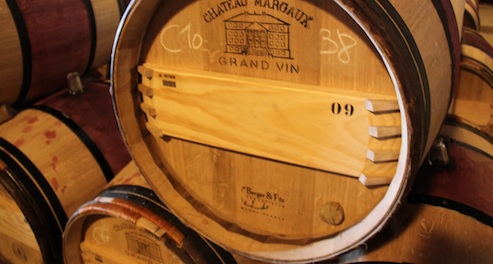
The last time I encountered corked wine was at a Michelin-starred restaurant in Spain called Casa Pepa a few weeks ago. A tall, dark-haired sommelier with a friendly demeanor had all the right manners and was very encouraging as I ordered an adventurous wine: a 2009 Viognier-Chardonnay blend from a Spanish producer called Venta d’Aubert. Mr. Sommelier did all the right things – presented us with the bottle, opened the bottle with flair and sniffed and tasted the white wine before serving. He remarked that the wine needed to be chilled and placed it in an ice bucket.
I was impressed by his thoughtfulness and sensitivity to wine’s serving temperature and felt I was in good hands. About ten minutes later, when he returned to pour the wine, he first poured a small sample to taste for himself. From the corner of my eye, I saw a frown of concern briefly cross his face. However, he smiled and served us the wine. The wine was clearly corked — there was no denying the musty, wet-cardboard, damp, rotting mushroom smell of TCA (trichloroanisole).
Whether Mr. Sommelier knew the wine was corked and poured it to us anyway, I am not completely certain. Everyone’s sensitivity to TCA varies and the threshold can be as low as 1 to 2 nanograms per litre. Mr. Sommelier graciously took back the wine and returned with a fresh bottle that strangely did not need any chilling. It was a simple uninspired wine that was clean and vibrant and thankfully without faults. A clean, fault-free wine is the base minimum requirement that we as wine lovers should demand, but this has never been the case since wine was encased in glass bottles with those fickle cork stoppers.
Why and how the wine industry accepted such a high fault rate (corked wines) for so many years is a big mystery. It took a wave of New World producers frustrated with the situation that shifted a cork-focused world to explore other alternatives. For years, Old World producers accepted the cork taint rate, which during the 1990s ranged between 5-10%. The cork industry remained firm that the rate was only 2-3%. Even at this conservative rate, it was deemed unacceptable to a growing number of New World producers.
In 2001, twenty-eight New Zealand wineries got together to form the Screwcap Wine Seal Initiative. They vowed to bottle all their fresh zingy wines, many of them Sauvignon Blancs, under screwcap. Just five years later, the vast majority of New Zealand wines were sold under screwcap and now, it is hard to find one that isn’t bottled under screwcap! In Australia, a movement led by Jeffrey Grosset of Clare Valley, South Australia, had a similar effect, first with Clare Valley’s intensely limey Rieslings, then quickly expanding to other regions and styles. The screwcap movement didn’t catch on as much in the United States, Chile and other New World wine regions but synthetic closures were making a big hit.
Eliminating cork closures doesn’t completely eliminate a potential TCA infection in wine. Cork closures account for about 75% of the problem but TCA forms through the interaction of phenols, chlorine and mold and can be found in the winery — in barrels, wooden racks, beams or cardboard cartons. Vigilant hygiene, avoidance of chlorine-based products and care is necessary to completely eliminate the chances of TCA-infected wines.
Cork still remains the closure of choice among traditional wine growers but this is changing. I was surprised to find during a visit to Domaine Ponsot last month, that all their wines including their Grand Crus starting with the 2008 vintage will be under a synthetic Guala closure. This is a bold move in a region well known for following and respecting tradition. Laurent Ponsot has decided that cork’s flattering side (e.g. ability to age wine slowly over time, resistance to temperature fluctuation and vibration, biodegradability) doesn’t make up for the potentially corked wines. Traditionalists like Jeremy Seyesses at Domaine Dujac sticks with cork because he found that during aging trials, the best wines were those under cork versus other closures.
The debate about the merits and disadvantages of cork versus other closures is ongoing and volumes of published work exist ad nauseum on this subject. It is a healthy debate and it has had a wonderful effect on the wine industry. Producers are seeking the best closure alternatives, the cork industry has been shaken from its slumber and consumers are increasingly aware of the cork-taint issue. With market share down from 95% a decade ago to just 69%, the cork industry is fighting back and improving their cork products. I can’t wait for the day when I don’t have to send a wine back as frequently as once a month.
Reprinted with permission from the South China Morning Post









